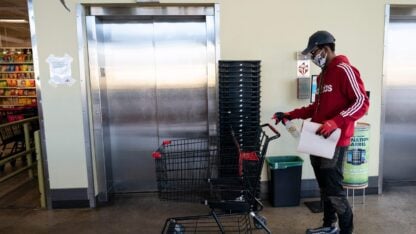As The Pandemic Grows, Georgia Hospitals Worry About Bed Space, Staffing Shortages

According to official records, it’s been more than 30 days since there have been more than 10 critical care beds available in a 17-county region that stretches from the extreme southern reaches of metro Atlanta toward the Georgia coast.
Pixabay
The month of July has seen COVID-19 hospitalizations in Georgia rise to levels not seen before, even during the early days of the pandemic. As the number of critically ill patients remains high, many parts of the state are left with few resources to care for them.
According to official records, it’s been more than 30 days since there have been more than 10 critical care beds available in a 17-county region that stretches from the extreme southern reaches of metro Atlanta toward the Georgia coast.
“We thought we were busy back in March and April. We thought that 10 patients was a whole lot of patients that had COVID,” said Don Avery, president of Fairview Park Hospital, the largest in the region. “The reality is we would love to be back [there] again, where we had eight or 10 patients.”
Related: Dig deeper into the COVID-19 pandemic with our podcast, “Did You Wash Your Hands?”>>
The hospital has cared for more patients in the month of July then they did during March, April and May combined, Avery says. The facility’s 16-bed intensive care unit has been full for most of the last 30 days.
That can be a problem, Avery says, because many smaller hospitals in the region rely on Fairview Park to take patients they can’t care for. With his facility running near capacity, Avery has to look for space in hospitals in cities that can be hours away.
“We have looked over the past couple of days — what are our options to transfer patients to Macon, to Savannah, even Augusta,” he said. “We have had a couple opportunities, but they are very, very limited in terms of bed availability.”
Fairview Park isn’t the only hospital in the state looking to send patients elsewhere.
Tift Regional Medical Center, the largest in a nine-county region in South Georgia, was on critical care diversion as of Wednesday afternoon. Officials there say the facility has been forced to refer patients to other facilities with open intensive care unit beds.
“The recent surge in Georgia COVID-19 patients has resulted in most hospitals throughout the state having increased numbers of admissions and, unfortunately, Tift Regional Medical Center has been no exception,” said Alex Le, the hospital’s chief operating officer, in a statement.
Official numbers from the Georgia Emergency Management Agency bear that out. The agency releases daily reports on critical care bed availability, broken down by region.
According to the latest figures, many of those regions have just a few beds available to care for the sickest patients. In the month of July, the percentage of critical care beds available has dropped by 9% statewide.
That comes as active coronavirus hospitalizations and newly confirmed COVID-19 cases in Georgia have more than doubled since July 1, per state figures.
Related: Tracking COVID-19 In Georgia >>
But some hospital officials say it’s important to remember that a pandemic is a fluid situation –statistics change all the time, especially those about ICU beds.
“It’s a snapshot in time, which most data is,” said Mary Chatman, president of WellStar Kennestone Hospital, of the state’s count of critical care beds. “I would say that data changes every day, every hour.”
Chatman also points out that every hospital is different. Hers, she says, has overflow beds to take care of additional COVID-19 patients as the need arises.
But even Kennestone — or the 11-hospital WellStar Health System it’s part of — doesn’t have an endless supply of perhaps the most important resource it needs: trained staff to take care of the critically ill.
“Our biggest challenge most recently has been staffing. Getting the staff to care for those patients is a day-to-day challenge to us,” Chatman said. “Recruiting and retaining those individuals is always a challenge.”
The pandemic has made finding those trained staff even harder, she says, especially as more and more hospitals see an increase in COVID-19 patients. WellStar Kennestone is working with staffing agencies to find the workers it needs — even recruiting them to come from out of state.
Some public health experts worry there’s simply not the trained health care workforce needed to handle an ever-growing number of people needing intensive care for coronavirus infections.
“You can’t make doctors or nurses out of nowhere,” said Dr. Carlos del Rio, who studies infectious diseases at Emory University.
It’s an issue that won’t go away, he says, even if hospitals are able to stretch their capacity by building more critical care beds and obtaining more tools to care for people who are very sick.
“You may build all the ICUs you want. You may have all the ventilators you need. But you will not have the staff you need,” del Rio said. “There simply are not enough ICU nurses or ICU doctors to take care of the patients.”








